Potřebujeme váš souhlas k využití jednotlivých dat, aby se vám mimo jiné mohly ukazovat informace týkající se vašich zájmů. Souhlas udělíte kliknutím na tlačítko „OK“.
ASTM E898-88(2013)
Standard Test Method of Testing Top-Loading, Direct-Reading Laboratory Scales and Balances
Automaticky přeložený název:
Standardní zkušební metoda zkoušení Top-Loading, Direct-Čtení Laboratorní váhy a váhy
NORMA vydána dne 1.12.2013
Informace o normě:
Označení normy: ASTM E898-88(2013)
Poznámka: NEPLATNÁ
Datum vydání normy: 1.12.2013
Kód zboží: NS-48401
Počet stran: 4
Přibližná hmotnost: 12 g (0.03 liber)
Země: Americká technická norma
Kategorie: Technické normy ASTM
Kategorie - podobné normy:
Anotace textu normy ASTM E898-88(2013) :
Keywords:
balances, direct reading, laboratory, scales, top-loading, ICS Number Code 17.100 (Measurement of force, weight and pressure)
Doplňující informace
| Significance and Use |
|
4.1 This method will enable the user to develop information concerning the precision and accuracy of weighing instruments. In addition, results obtained using this method will permit the most advantageous use of the instrument. Weaknesses as well as strengths of the instrument should become apparent. It is not the intent of this method to compare similar instruments of different manufacture, but to enable the user to choose a suitable instrument. |
| 1. Scope |
|
1.1 This test method covers the determination of characteristics of top-loading, direct-reading laboratory scales and balances. Laboratory scales of the top-loading type may have capacities from a few grams up to several kilograms. Resolution may be from 1/1000 of capacity to 1/1 000 000 or more. This method can be used for any of these instruments and will serve to measure the most important characteristics that are of interest to the user. The characteristics to be measured include the following: 1.1.1 warm-up, 1.1.2 off center errors, 1.1.3 repeatability, reproducibility, and precision, 1.1.4 accuracy and linearity, 1.1.5 hysteresis, 1.1.6 settling time, 1.1.7 temperature effects, 1.1.8 vernier or micrometer calibration, and 1.1.9 resistance to external disturbances. 1.2 The types of scales that can be tested by this method are of stabilized pan design wherein the sample pan does not tilt out of a horizontal plane when the sample is placed anywhere on the pan surface. The pan is located generally above the measuring mechanism with no vertical obstruction, except for draft shields. Readings of weight may be obtained from an optical scale, from a digital display, or from a mechanical dial. Weighing mechanisms may be of the deflecting type, using gravity or a spring as the transducer, or may be a force-balance system wherein an electromagnetic, pneumatic, hydraulic, or other force is used to counterbalance the weight of the sample. Other force-measuring devices may be tested by this method as long as a sample placed on a receiving platform produces an indication that is substantially a linear function of the weight of the sample. 1.3 This standard does not purport to address all of the safety concerns, if any, associated with its use. It is the responsibility of the user of this standard to establish appropriate safety and health practices and determine the applicability of regulatory limitations prior to use. |
Podobné normy:
Historická
1.12.2012
Historická
1.4.2012
Historická
1.5.2013
Historická
1.4.2011
Historická
1.11.2011
Historická
1.11.2008


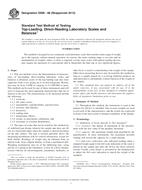
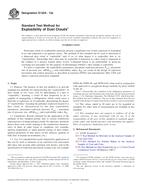 ASTM E1226-12a
ASTM E1226-12a ASTM E1719-12
ASTM E1719-12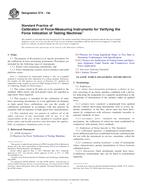 ASTM E74-13a
ASTM E74-13a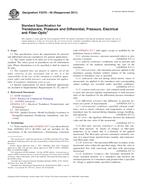 ASTM F2070-00(2011)..
ASTM F2070-00(2011)..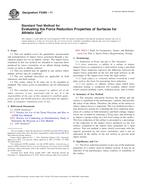 ASTM F2569-11
ASTM F2569-11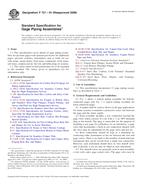 ASTM F721-81(2008)..
ASTM F721-81(2008)..
 Cookies
Cookies
